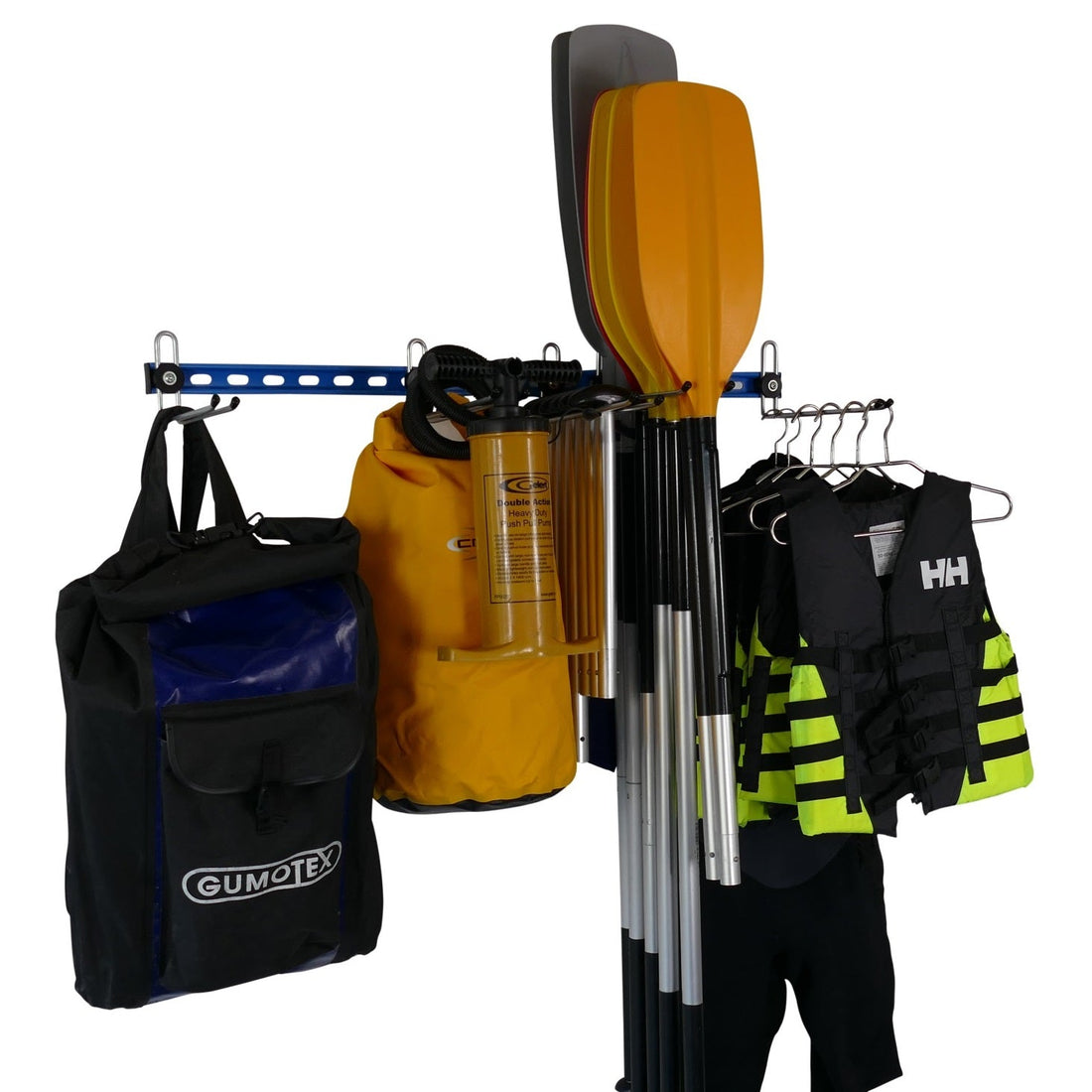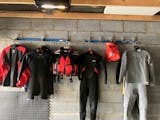
How to Make a Wetsuit Drying Rack: DIY and Commercial Solutions
Share
Properly drying your wetsuit is essential for maintaining its longevity and performance. Whether you're a surfer, diver, or water sports enthusiast, having an effective drying solution can prevent mould, mildew, and unpleasant odours.
This article explores various methods to create or acquire a wetsuit drying rack, ranging from DIY projects to commercial products.
Some DIY Wetsuit Drying Solutions
There are a few different ways to make your own wetsuit drying rack. Things to consider are:
- wetsuits need to be hung on hangers so make sure it is able to hold the hook on top of your hangers (preferably folded at the waist - see below)
- wet wetsuits are very heavy so make sure your solution is strong enough to hold the weight of several at once
- steel parts will rust if not glavanised or powder coated. Aluminium would be an option too.
- dripping water may be a problem in some areas. If you need to catch the water long shallow seedling or garden trays (from a garden centre) are ideal.
These are a few suggestions but there are many other options:
1. Adapt a heavy duty clothes rail on wheels

This solution is quick and involves almost no DIY skills. Just make sure you find a heavy duty clothes rails. Most are designed for bedroom use and are made to hold a few dresses or shirts. A wet wetsuit will weigh around 20Kg or more so you need to find a heavy duty version and not overload it. This version pictured above costs around £129.00.
PVC Pipe Wetsuit Drying Rack
A popular and cost-effective DIY method involves constructing a rack using PVC pipes. This design is customizable to fit your space and can support multiple wetsuits and accessories. By incorporating a base tray or placing the rack over a bathtub, you can collect dripping water efficiently. This solution will be time consuming to build, cost up to £80 and will be limited to 3 or 4 wetsuits. For more details click this link
Wetsuit Hanger with Integrated Fan

For quicker drying, especially in humid environments, some people consider building a hanger with an attached fan (believe it or not) although it's not a solution we would recommend.
This setup circulates air through the wetsuit, reducing drying time and minimizing odour. Materials needed include a sturdy wooden hanger, a cooling fan (e.g., AC Infinity AXIAL 1238), aluminum brackets, and basic tools.
This article explains how to manufacture this hanger but you are still going to need a rack to hang the hangers on.
Be aware that you are mixing electricity and water which could be dangerous if not done properly (and probably still dangerous even if you know what you are doing). A dehumidifier would be a safer and easier solution if you need to accelerate the drying process.
Wetsuit Waist Hanging Method

To prevent shoulder stretching, some experts recommend hanging the wetsuit folded at the waist over a wide bar or padded hanger. This method distributes weight evenly and reduces stress on the neoprene material.
You could do this on both previous ideas but you will need a specialist hanger like the one above.
Commercial Wetsuit Drying Racks
1. GearHooks® Water Sports Storage Rack
GearHooks offers a versatile storage solution designed for water sports equipment. Their racks can accommodate wetsuits, buoyancy aids, and other gear, providing organized storage and efficient drying. The modular design allows customization based on individual needs.
You can view these products here and prices start and £51.00 for a version with 3 hooks.
2. Malo'o DryRack

The Malo'o DryRack is a portable and foldable drying rack suitable for outdoor use. It features adjustable arms to hang wetsuits, towels, and other gear. The rack can be attached to vehicles, making it ideal for beach trips or camping.
3. C-Monsta Hanger

The C-Monsta Hanger is designed to dry wetsuits, boots, and gloves simultaneously. Its wide shoulders prevent neoprene damage, and the open design ensures optimal airflow. Users have praised its effectiveness in reducing drying time and maintaining gear shape.
These are a great hanger to use on the GearHooks water sports rack above.
4. Underwater Kinetics HangAir Hanger
This hanger from Underwater Kinetics (like the DIY version above) incorporates a built-in fan to expedite the drying process.
It's particularly useful in humid conditions or for thick wetsuits that take longer to dry. The fan circulates air through the wetsuit, reducing moisture and preventing odour. Given that its a commercial product it should be safe to use. However, you will still need a suitable rack to hang it on.
Additional Wetsuit Drying Tips
- Use a Dehumidifier: Placing a dehumidifier in the drying area can significantly reduce drying time, especially in enclosed spaces.
- Avoid Direct Sunlight: While sunlight can aid drying, prolonged exposure can degrade neoprene. Opt for shaded, well-ventilated areas.
- Proper Rinsing: Always rinse your wetsuit with fresh water after use to remove salt, sand, and other residues that can damage the material.
- Turn Inside Out: Drying the wetsuit inside out initially ensures the interior dries thoroughly, reducing the chance of bacterial growth.
Conclusion
Whether you choose a DIY approach or invest in a commercial drying rack, the key is to ensure your wetsuit dries efficiently and maintains its shape.
Consider your specific needs, space constraints, and budget when selecting the best method. Proper drying not only extends the life of your wetsuit but also enhances your comfort during water activities.
For visual guidance on building a DIY wetsuit dryer, you may find the following video helpful:






